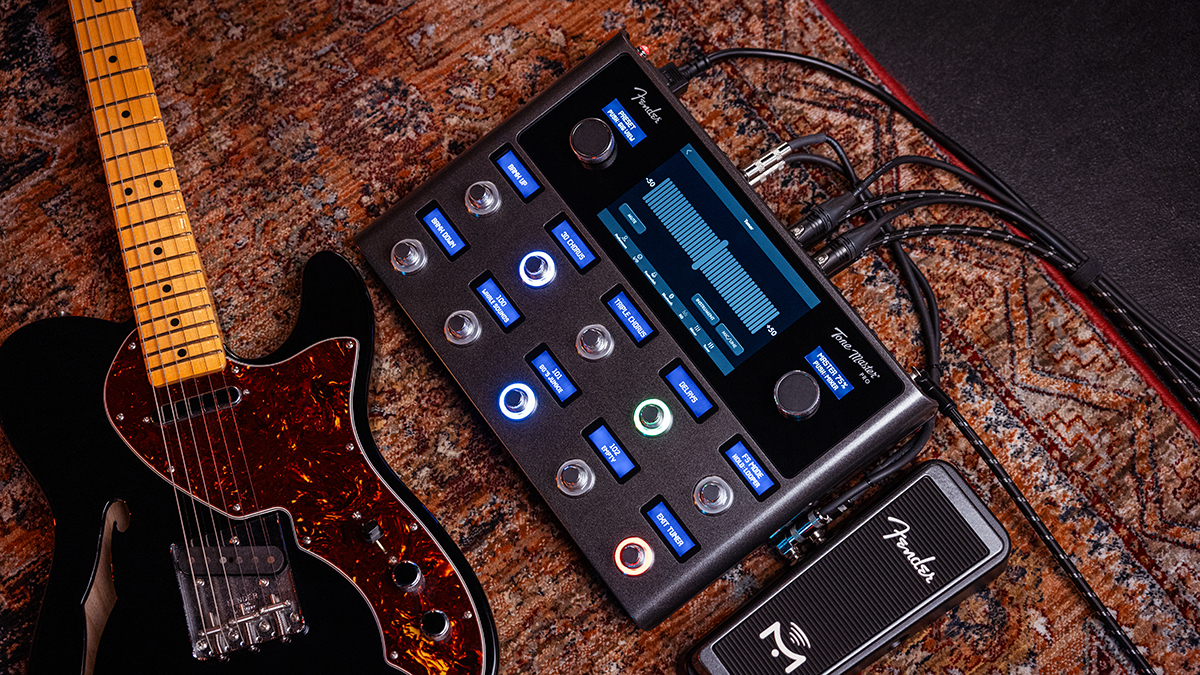“I had to sell my phone to buy my first guitar because my parents wouldn’t let me get one! It was a very, very bad acoustic – a knock-off Gibson called Givson”: How Bloodywood went from dodgy guitars and YouTube covers to India's biggest metal band
Determined to retain folk roots in his heavy output, he talks manifesting their Babymetal collab, inexperienced luthiers, a knock-off Strat with a strangely quiet third string, and how to choose a modeler now they’re all as good as each other
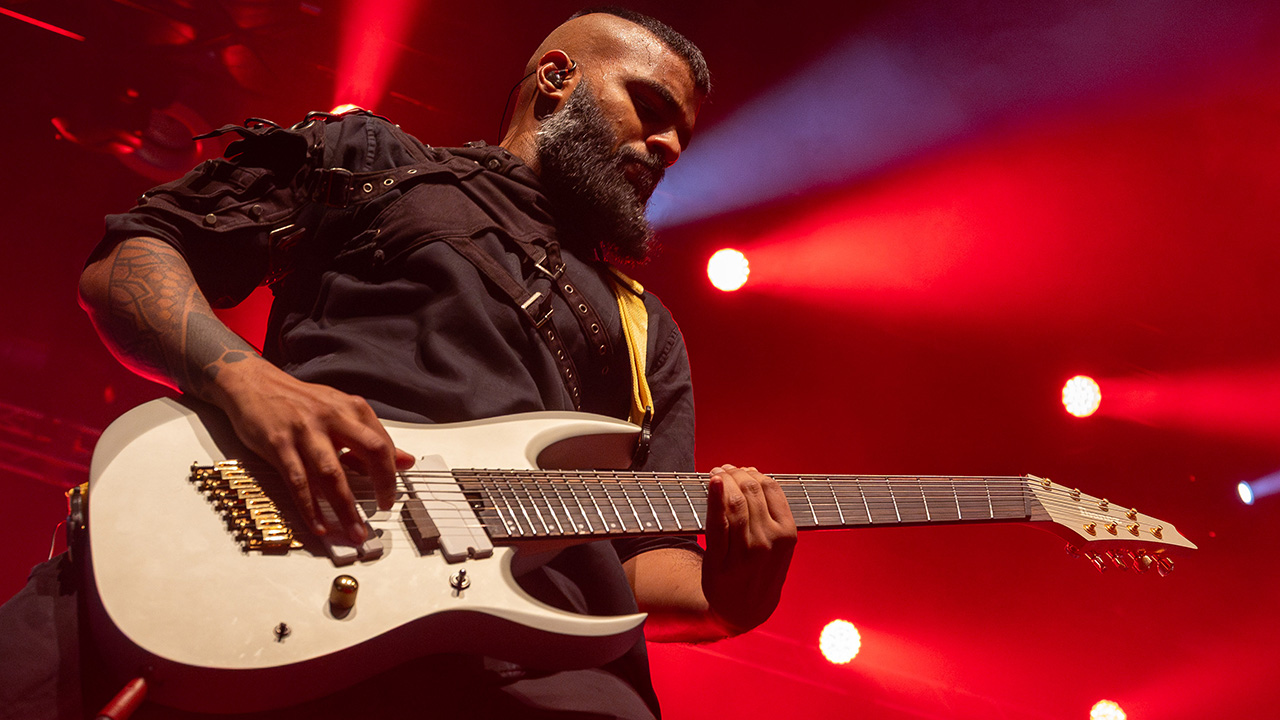
It’s been a whirlwind couple of years for New Delhi’s Bloodywood, and guitarist Karan Katiyar knows he’s fortunate to be there. “We played Wacken Open Air in 2019, on our first tour ever,” he says. “Our third show ever was at a festival in Germany. I don’t know how we did it – we had no tour manager and no idea about merch. Half of us had never been abroad!”
Bloodywood have learned a lot since then. They dropped their sophomore album, Nu Delhi, earlier this year, and they’ve been on tour with Babymetal, also guesting on the headline act’s latest album, METAL FORTH.
One thing hasn’t changed: they’re hell bent on delivering monster-truck riffs and spearheading the nu metal revival without forgetting their roots. “We try to keep the Indian instruments at the forefront,” Katiyar says.
“We make it sound cohesive and understandable in the context of extreme music. The other instruments work toward making the folk instruments feel at home.
“I don’t use the guitar as the leading instrument. I use it like soccer teams use playmakers, midfielders. They're not out for glory, but they have a very important role to play in making things work.”
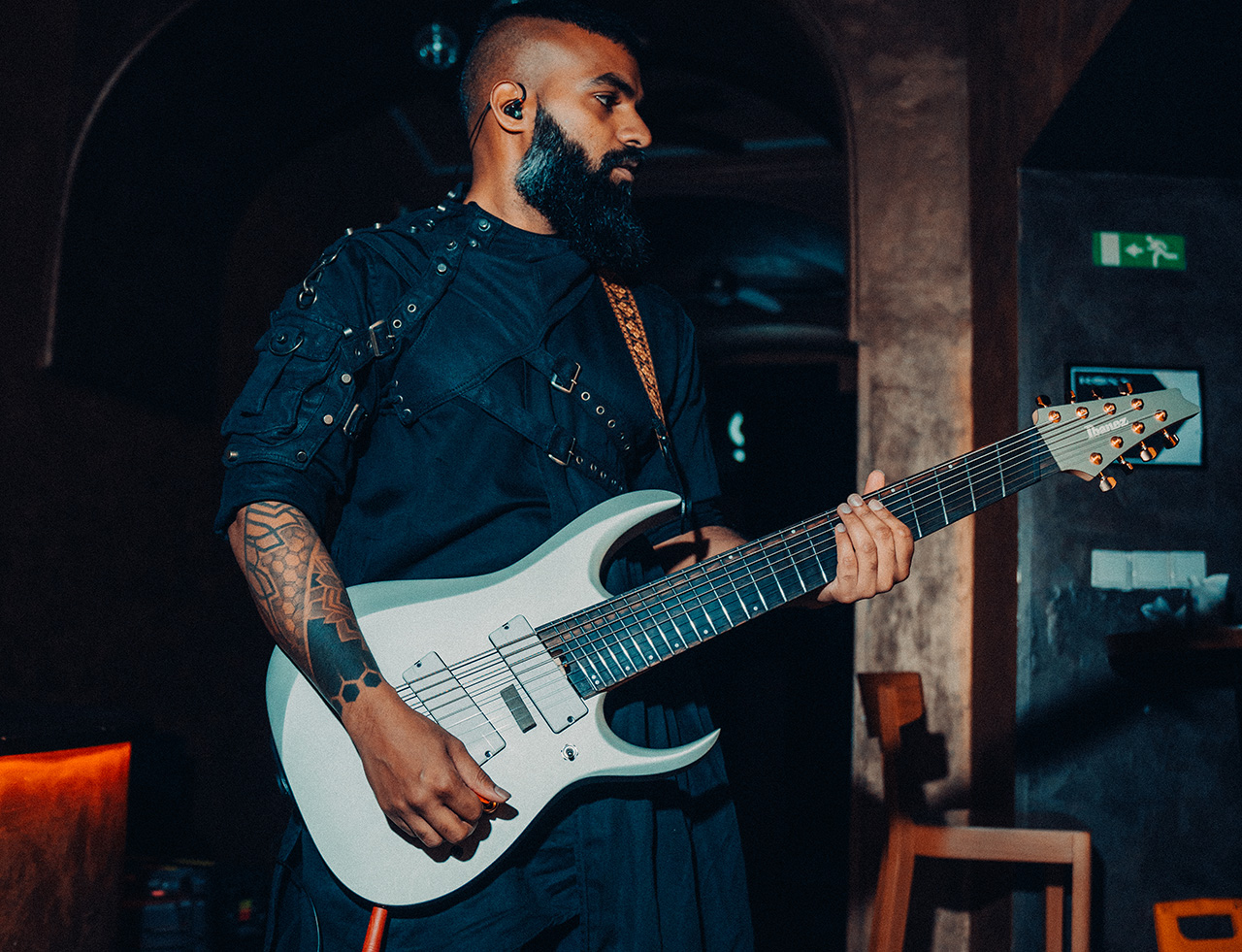
Do you remember the moment you first picked up the guitar?
“My first instrument was something that’s called a keyboard in India – I don’t know why! It’s basically a synthesizer that kids learn to play on. I was sent to learn classical Indian music at a teacher’s house nearby.
All the latest guitar news, interviews, lessons, reviews, deals and more, direct to your inbox!
“I picked up the guitar several years later. I had to sell my phone to buy my first guitar because my parents wouldn’t let me get one! It was a very, very bad acoustic guitar – a knock-off Gibson called Givson.
“The action was so high and I was trying to play stuff like Sweet Child of Mine and all of the beginner stuff. It really strengthened my left hand because it was such a bad guitar.”
How did you eventually discover nu metal?
“Nu metal was the first genre of heavy music I heard, through Linkin Park. But I think the band that pushed me to play guitar was Lamb of God. They have a big following in India.
“They’re known for their insane tricks, and I just wanted to be able to play those riffs. Eventually I came back to nu metal because it just felt like home. Nu metal fits like a glove within the soundscape of Bloodywood’s music. It’s groovy, it’s bouncy, and that’s what Indian music is about.”
Why did you decide to ditch your legal career in favor of music?
“I hated my job! I’d been doing music for six years before I became a lawyer, and music was the only thing that really gave me joy – writing songs and playing shows to 20 or 30 people.
“It was a very different life being a corporate lawyer. There was a system of authority, which I hated a lot. People were very close-minded. It just didn’t make any sense. I decided to get a certain amount of savings and jump off the boat.
“I saved enough money to survive for two years. I thought, ‘I’m going to give this my all – throw everything and the kitchen sink into this.’ Thankfully, it worked out!”
You started out putting covers on YouTube. What did you learn from that?
“We did them so that you wouldn’t be able to recognize what songs we were covering. It was a way to get people to listen. A lot of artists do that now – but back in 2015, doing a metal version of a 50 Cent song wasn’t very common.
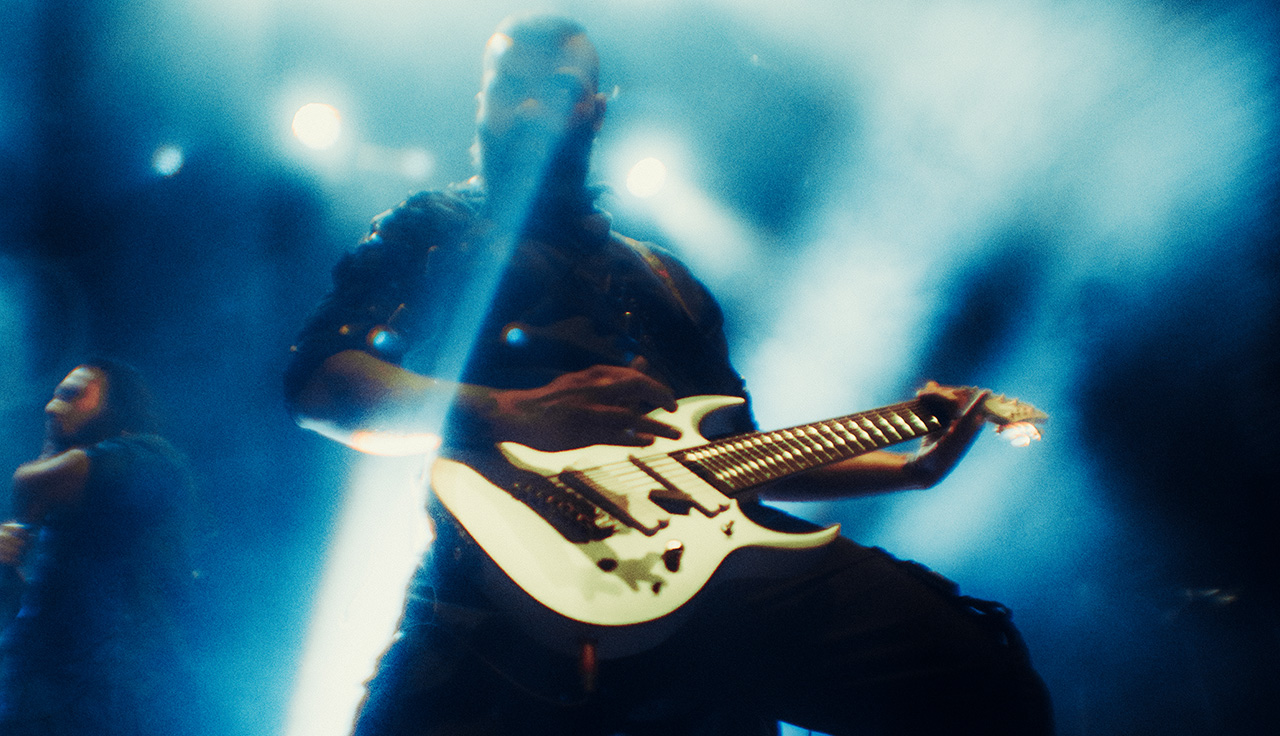
“When we made covers, we changed the songs entirely. We learned it’s best to stick to our roots, which is traditional Indian music. When we started mixing those elements into our covers, that’s when we discovered our sound.”
What gear did you start with, and what are you currently using?
“I started with a knock-off Stratocaster from a company called GB&A. It was a very bad instrument – for some reason the third string was less audible than all the other strings!
“I progressed to the Fernandez Dragonfly X. It’s a beginner guitar, but it held up for most of my teenage years. Then came my affairs with custom-made guitars. The thing is, they’re only as good as the luthier who makes them. Unfortunately luthiers in India didn’t have a lot of experience; they were just starting ou.
“I worked with a company called Cathode. They’re still at it and they’re getting better with every guitar they make. I also used Bigfoot, which was a very, very good guitar. Now I’m endorsing Ibanez, who’ve sent me a lot of guitars including an RGDMS8. I couldn’t be happier; I’m running out of space at home!”
When did you decide to move from a six-string to a seven-string?
“I still feel the six-string is home for me. I had to go lower because I had to find the scale where Jayant Bhadula’s voice shines. There’s always the argument that you can go for an extended-scale or have heavier strings, but I have a problem with that.
“It’s not going to sound like a seven- or eight-string because of the pickups. You never have pickups meant for a seven- and eight- on a six-string – or at least they’re not totally equivalent. I had to go as Jayant’s voice is better in lower registers. So it was all to serve the music.”
I worked on this one particular song with the belief, ‘We will have a Babymetal collab!’
What’s your go-to gear at the moment?
“I've always been a huge proponent of digital gear. I’m using the Neural DSP Quad Cortex and before that I was using the Line 6 Helix. We shifted to the Quad Cortex because it’s smaller device but equally capable. I believe all modelers now are equally capable. The smaller device is easier to tour with.”
Since you also produce Bloodywood, do you consider yourself a producer or a guitarist first?
“I believe I’m a songwriter first, a guitar player second, and a producer third. My primary job is creating music that stands out. Production, in my opinion, includes mixing – something I didn’t want to pick up, but is also now my job.
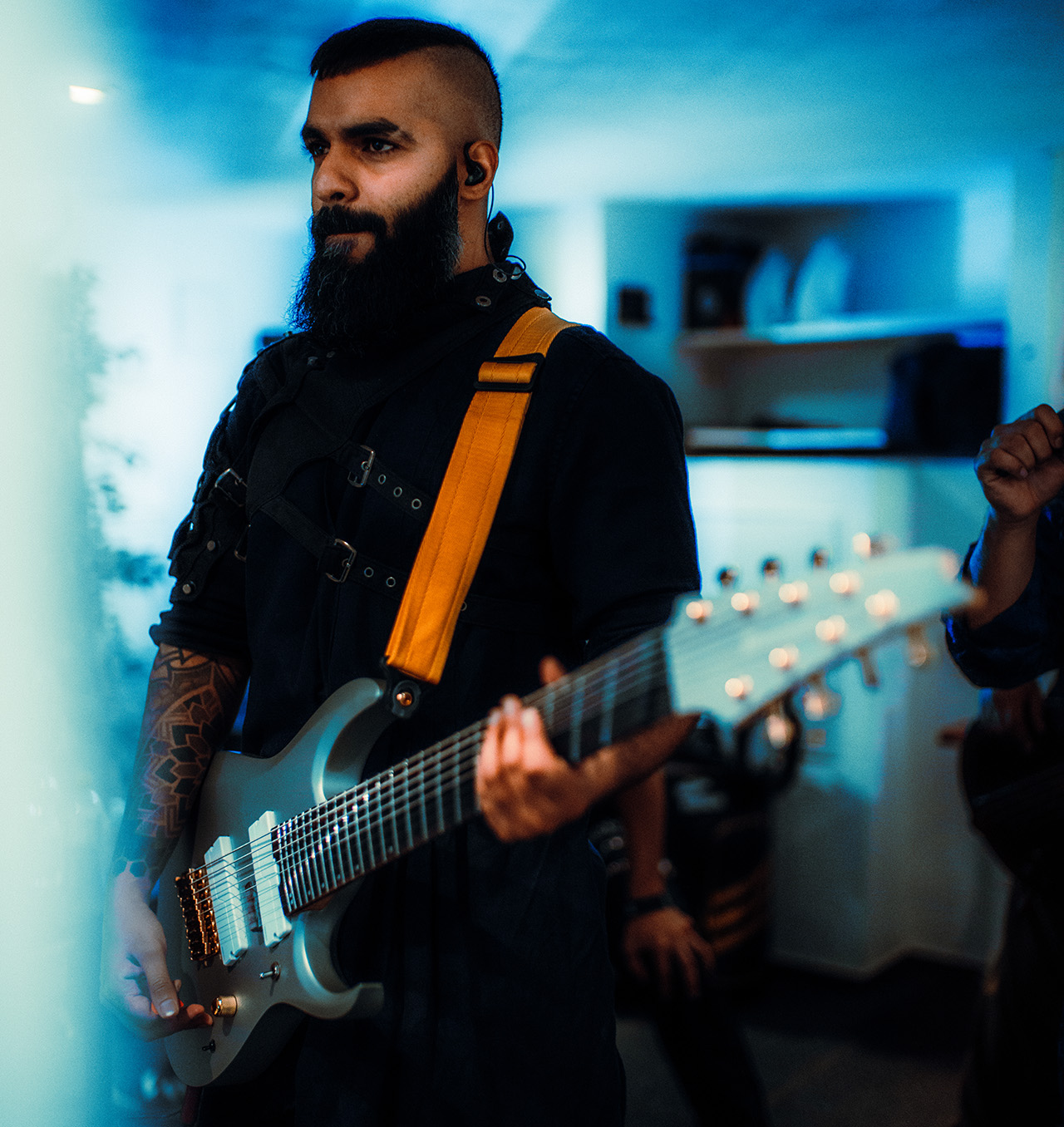
“We tried getting songs mixed by the best in the industry, but they’re not from India; they don’t know how Indian instruments work. What they sent back was great in terms of how other bands sound. It didn’t sound like us.”
How did the collaboration with Babymetal come about?
“When we played in Tokyo in 2023, Kobametal came to see us. Koba is, basically, the guy with the vision. We got talking about music and tours, and I said we should work on something together. He didn’t answer, but he smiled. I thought, ‘Okay, maybe that’s a maybe.’
“We got back to India, and I started working on album two. I worked on this one particular song with the belief, ‘We will have a Babymetal collab!’ That song is Bekhauf.
“The day after it was finished, I got a message from Koba saying, ‘Maybe we should work on something together.’ Call it a coincidence or manifestation, but I sent him Bekhauf and another track, and he loved both. He gave me absolute freedom to do what I wanted. They were very nice to work with, and they’re very efficient.”
Who are your top three artists from India?
“I would say Aditya Swaminathan from Demonic Resurrection is number one. We took them on a tourof Europe. They played before us, and all I would think watching Aditya was, ‘Now we have to go up, and everyone’s gonna say the guitarist sucks!’
“When we talk about bass, it’s Mohini Dey. And there’s a band I’ve been giving shout-outs to since 2019, Pineapple Express – they’re arguably the best band in India.”
- Nu Delhi is on sale now.
Janelle is a staff writer at GuitarWorld.com. After a long stint in classical music, Janelle discovered the joys of playing guitar in dingy venues at the age of 13 and has never looked back. Janelle has written extensively about the intersection of music and technology, and how this is shaping the future of the music industry. She also had the pleasure of interviewing Dream Wife, K.Flay, Yīn Yīn, and Black Honey, among others. When she's not writing, you'll find her creating layers of delicious audio lasagna with her art-rock/psych-punk band ĠENN.
You must confirm your public display name before commenting
Please logout and then login again, you will then be prompted to enter your display name.




